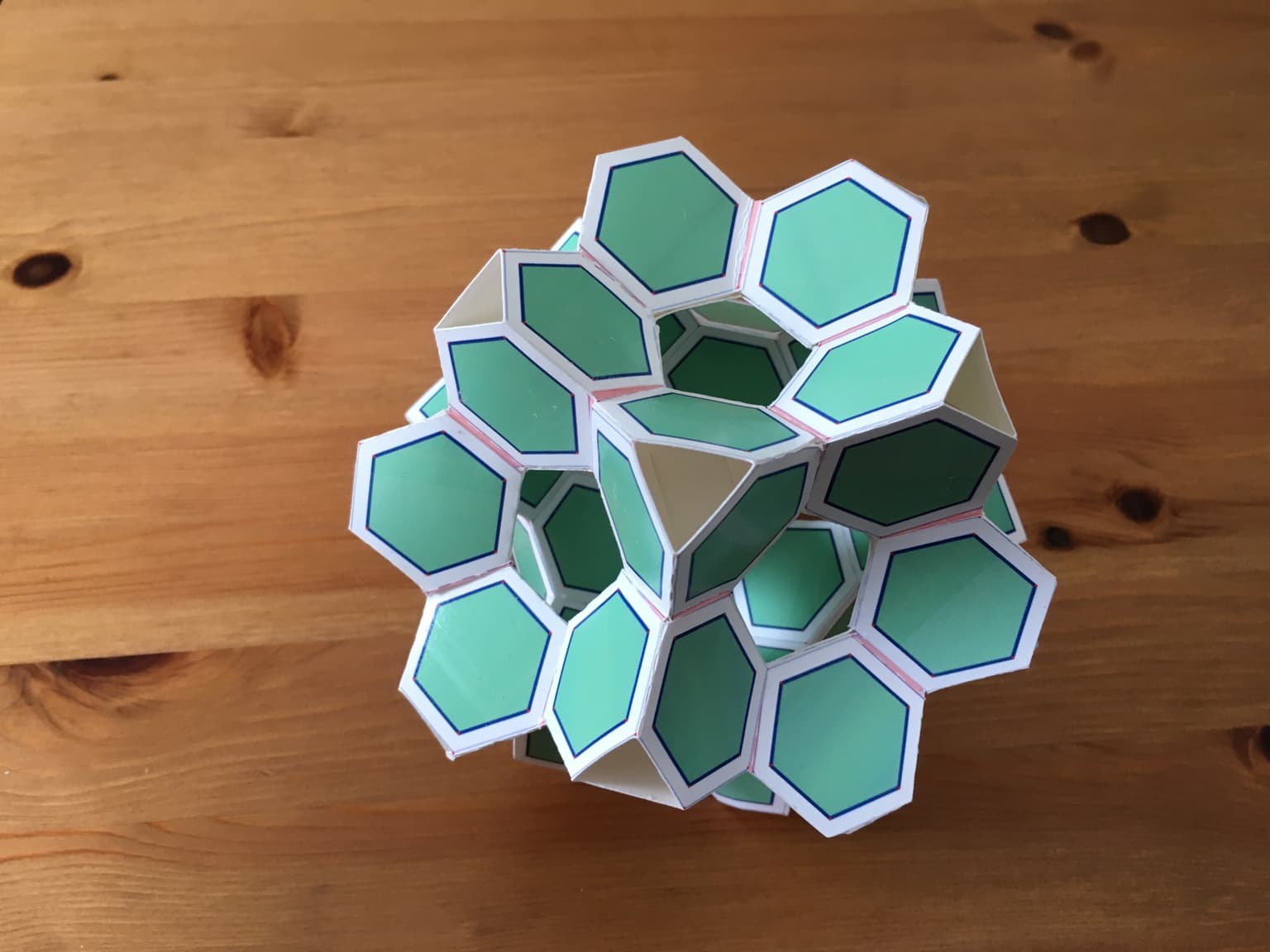Frank Gould
Artists
Frank Gould
Adjunct Professor of Mathematics (Retired)
Math Department, Central Connecticut State University
New Britain, Connecticut, USA
Statement
My wife, Louise, has drawn me into her explorations of polyhedra and polytopes over the years. This piece more or less forced itself on me because of a misstep in putting together a model of a classic Petrie-Coxeter skew-regular infinite polyhedron. It was striking in that it appeared to be a portion of a semi-regular (rather than regular) space-filling polyhedron, but with dodecahedral symmetry, which is not possible. Another striking aspect was that the surface appeared to separate space into a union of soccer balls on one side and a union of truncated tetrahedra on the other side. So, what was it? The one section of the polyhedron had its own compelling beauty and seemed worthy of a careful rendering for a math-art display.
Artworks

Impossible Polyhedron?
12 x 16 x 16 cm
card stock
1917